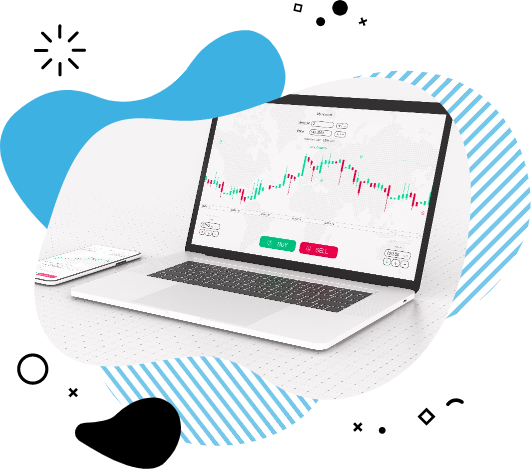
Facts About Oil
Commonly known as oil, crude oil and petroleum. It is a fossil fuel that occurs naturally and is a yellowish-black liquid containing hydrocarbons. Like natural gas and coal, oil is formed from the ancient remains of marine organisms through extreme heat and pressure in geological structures over millions of years. Oil is normally recovered through drilling, advances in technology now make it possible to recover it from oil sands and shale. It gets refined and separated by distillation most commonly. The products of this process are gasoline or petrol, diesel, kerosene, asphalt and chemical reagents which are used to make plastic, pharmaceuticals, and pesticides, and are used in the manufacturing of a wide variety of other materials. Oil is hugely important in the economy with its rise triggered by the invention of the internal combustion engine. It is estimated that the world consumes 100 million barrels each day.
Oil can vary given how it is formed and where it is extracted. Brent and WTI are the world’s 2 main oil markets. The first one, the main reference price for Europe, Africa and the Middle East or roughly two-thirds of the world's crude production is known as Brent Crude oil which is recovered from the North Sea. This sort of oil is recognized for being on the lighter side of the 2. Being light indicates that it does not have a particularly high density, and being sweet indicates that there is a low ratio of sulfur.
The second type of oil is known as WTI or west texas intermediate crude oil. It is a specific grade of crude oil and is the main US benchmark for oil prices. It is the sweeter of the 2 with a lower sulfur content and is primarily sourced from inland Texas.
Difference between Brent and WTI
• One of the most significant distinctions between Brent and WTI is that Brent oil is more actively traded than other types of petroleum products.
• The API gravity of Brent and WTI oil respectively is around 38 & 39.6 per cent, and their sulfur content is 0.37 & 0.24 per cent. This makes WTI heavier than Brent oil.
• At its most extreme, the price differential between WTI and Brent oil, commonly referred to as the Brent/WTI spread amounted to eight dollars. Differences in geopolitical conditions are the root cause of price disparities. When compared to WTI, Brent oil is more susceptible to the effects of international crises.


The dynamics of the oil market
This is one of the most actively traded commodities and the price is extremely sensitive to geopolitical and weather events or more simply put traders' expectations of supply and demand. As a result of the coronavirus pandemic, there was an oil storage crisis with demand significantly reduced and supply maintained. There was simply too much oil. The WTI price went negative, from 18 USD to - 38 USD, theoretically, people were getting paid to take delivery of oil. This was a historical first. This was preceded by a price war between Russia and Saudi Arabia known as the OPEC crash which saw both reference prices plummet between 24-34%.
The oil price has since recovered to around the 100 USD per barrel mark. A barrel is equivalent to just shy of 160 litres. According to the International Energy Agency’s (IEA) May 2022 oil market report demand continues to grow albeit at a slower rate and with persistent higher prices. For 2022 demand is expected to increase to on average 99.4 mb/d. The conflict in Russia is driving down the world oil supply.
Global refinery margins have skyrocketed as a result of low inventories and constrained refinery activities, driven mainly by China. Global oil inventories during March were at their lowest level since June 2020. EU sanctions on Russia and demand and supply issues relating to China are driving renewed price tension. These high prices of oil are supporting strong current inflation trends.
Other factors that affect the price of oil
• OPEC (Organisation of Petroleum Exporting Countries) is responsible for a considerable amount of oil production. This group determines the production amount to satisfy global demand. Therefore, they are affecting the price of oil.
• There is a correlation between a rising economy and a rise in the demand for petroleum products. Oil is required in many different industries, including energy production, transportation, and manufacturing.
• When there is a decline in the oil demand, but production levels remain constant, there will be an excess of oil, which will then be put into storage facilities. However, there are restrictions regarding the quantity of oil that may be kept in storage.
• There is a correlation also between the availability of alternative energy sources like wind power, nuclear energy, and solar energy and a drop in the oil trading price.


Ways to trade crude: Trading Oil Futures and CFDs
To get things started, there is a huge range of ways to trade the price of oil. These include buying and selling oil directly, or more conveniently through futures, options and other derivatives. ETFs and mutual funds that invest in oil products are two more investment options. Lastly, investment in oil may also be accomplished via the purchase of shares in oil-producing firms on various global exchanges.
Standardised agreements to trade oil at a predetermined price on a certain date are what are known as futures contracts for oil. Trading oil futures are the choice of most traders in the world. Along with speculation futures contracts are used to manage future production and consumption and so heavily influence the price of this commodity.
Using contracts for difference (CFDs), you can get access to the oil markets in smaller increments, without the hassle of taking delivery and at a very low cost. This makes it the choice of many traders.
Why choose Fairmarkets for oil trading?
FairMarkets provide Brent and WTI oil CFDs denominated in US dollars. The ticker for these is USOIL & UKOIL respectively. This is an easy way to access the oil market with the smallest contract being equal to 10 barrels and giving retail traders leverage of 10:1.
Let's look at an example. The price of oil has put in a lower high on the price chart and looks under pressure with global consumption constrained by higher interest rates, you take a view that the price will continue to fall and want to trade this idea. You open a FairMarkets trading account which gives you access to a broad range of global markets including Brent via the UKOIL ticker. You sell 0.5 oil CFDs which gives you exposure to 50 barrels of Brent for 95 USD for a notional exposure of 4,500 USD.
This requires you to post a margin of 450 USD. Let's say you are right and you buy back your position at 91 USD, you make a 200 USD profit. If you are wrong and your stop loss gets triggered at 97 USD you make a loss of 100 USD. That simple. Depending on the account type you will pay a small transactional fee for selling and buying, and interest on the position if you hold overnight.
The oil market is exciting with its geopolitical themes and players, vast essential economic uses and demand nuances. This results in price volatility which creates unlimited opportunities for traders to take advantage of!

F.A.Q
How is the oil market regulated?
The Organization of Petroleum Exporting Nations (OPEC), which is comprised of 13 distinct member countries, has regular meetings to debate and agree on the production levels of oil produced by each country. A straightforward supply-and-demand dynamic underpins OPEC's ability to manipulate the cost of crude oil via the regulation of production levels.
Which nations are most responsible for the production of oil globally?
The United States of America is the country that produces the most oil daily, averaging 19.47 million barrels, making it the leading producer in the world. Saudi Arabia is the second greatest producer in the world, producing 11.62 million barrels per day, which is equivalent to 12 per cent of the total output of the globe.
How can I purchase oil shares?
You may acquire oil stocks or CFDs on oil stocks through a broker or derivatives provider such as Fairmarkets. When you invest in oil stock CFDs, you gain exposure to the underlying stock price movements without the complications of owning the underlying share.
How can I get exposure to oil at the current market price?
Using a Brent or WTI oil CFD through FairMarkets you can access the 2 main oil reference prices. FairMarkets will hedge exposure to oil directly in the markets removing the need to have different accounts with different exchanges and brokers to trade a broad range of global markets.
How are oil futures traded?
Brent and WTI oil prices are determined by trading on the futures exchange amongst other things. FairMarkets will hedge positions in the futures markets and these market conditions are then passed on to clients when they use Brent or WTI CFDs.
Can I trade Brent and WTI oil on MT4 and MT5?
Yes. Using Brent and WTI oil CFD liquidity through FairMarkets you will be able to trade Brent & WTI oil prices on both the MT4 and MT5 platforms.


